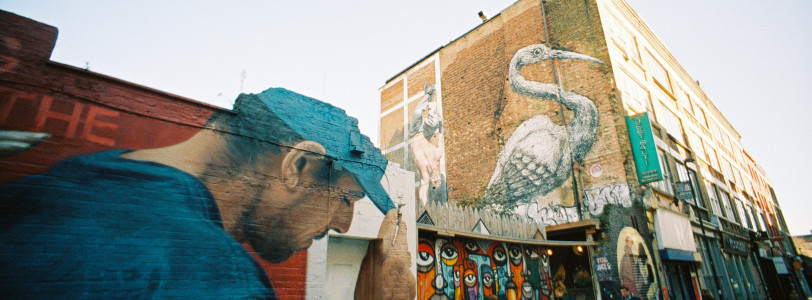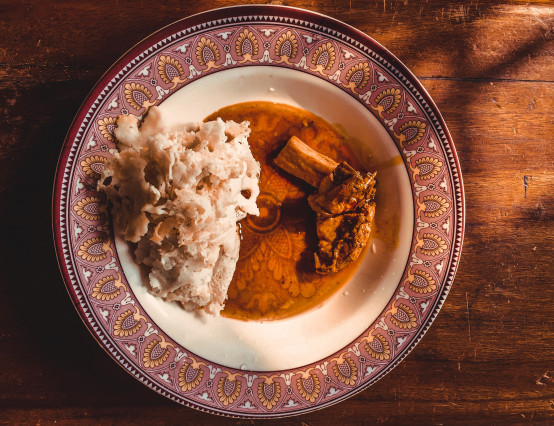History
Brick Lane is a street located in the borough of Tower Hamlets in East London. It was once commonly known for its curry houses and rapidly growing Bengali community, so much so that it was given the name Banglatown. In the late 20th century many immigrants from Bangladesh, specifically the Sylhet region, migrated to the area and opened up numerous businesses such as clothing stores and restaurants. The street name sign is also translated into the Bengali language, further emphasising how integral the community is to its history.
However, in more recent years the area has been gentrified, with nearby Shoreditch established as one of London’s biggest hotspots for young people interested in arts and culture. The urban hotspot has become populated with trendy restaurants and bars as well as developing into London’s hub for small tech start-ups. The influx of hipster culture has also impacted Brick Lane and largely regenerated many aspects of the area.
Banglatown
A street which was once catering to its community of predominantly Bengali families and business is today filled with high-priced vintage and art stores advertising to a very contrasting audience. This rapid social and economic transformation has led many to celebrate whilst others have been left questioning the negative impact of such changes. As the area has become more desirable, housing prices have increased, leading many long-term residents from ethnic minority backgrounds to move. One study concluded that the borough of Tower Hamlets, which includes Brick Lane, had undergone the most gentrification in London from the years 2010 to 2016. The research also highlights how of the nearly ‘300,000 homes built in London in the 2010s, only one-third fell within the designation of affordable housing’, thus emphasising the lack of support for working class families and the huge scale of this transformation.Housing companies have clearly benefited greatly from the various investments in the area, but whether or not local residents have benefited is debatable.
Social Media
Many people have expressed that the perception of Brick Lane as a ‘hipster heaven’ stems largely from its portrayal on social media by predominantly white users. Often videos of people in candid moments near the street showcasing their fashion spark viral attention and commentary from people taking pride in the area and all its fashionable stores. Hakeem, 22, strongly detests this. She grew up in Hackney and later moved out of East London with her family.
It’s crazy the way people view Brick Lane today; these same people were not saying this years ago I can promise you that. I think what hurts is seeing the people who built this area not benefit from any of the development, we would have liked funding as well. It's only here now because there are different faces around.
While gentrification may bring the better infrastructure and open spaces, it is often at the expense of local residents.Alternatively, social media has also played a role in helping to assist local businesses.This is through viral content encouraging people to support local businesses, such as those seen at the Upmarket near Spitalfields where largely people from Caribbean and Bengali backgrounds display a variety of food and clothing stalls.
Matt, local store owner of Brazilian brand Mafalda describes how he is strongly against gentrification but recognises he can use digital and social media platforms to attract new customers. “Many of our female customers come to Brick Lane because they have found us online, we see social media as one of our main marketing tools, as a small business we don’t have the money to pay advertising agencies – you have to do everything by yourself and social media allows that”. This highlights how some businesses can potentially attract new customers because of the attention from viral content despite the ongoing hipsterfication.
Just Business
One of the more notable and controversial projects that will transform Brick Lane is the five-story shopping mall development being built upon the old Truman Brewery. Despite many protests and backlash from local residents, the project was approved in September 2021. Many locals expressed their concern for the build, and felt the mall will destroy the restaurants and stores it houses as well as damage the culture of the area. Zeelof Partnership, which owns the Truman brewery site, are quoted in the New York Times stating that ‘the new centre would create several hundred jobs, mostly for local people’.
Fighting back
In late 2020, the ‘Save Brick Lane’ campaign garnered large amounts of traction online across various platforms. The campaign aimed to fight against policies that will harm working class families and disrupt the culture of Brick Lane including the development of the shopping mall. After gaining significant support and attention from various communities, the Save Brick Lane campaign was recently granted a judicial review. This review could lead to the plans being amended or completely thrown out. The Save Brick Lane campaign has now collected over £20,000 to help legally fight against this build as they believe the plan must be rejected so that ‘Brick Lane is not destroyed by corporate development’. In addition, groups such as Nijjor Manush, an independent campaigning group whose aim is to empower and organise Bengali and British Bengali communities, helped garner social media attention and support to fight against the advancement of the mall.
Ultimately, such organising demonstrates how providing voices for marginalised communities can effectively help prevent their erasure due to gentrification. As a consumer, you can choose to be conscious about where you give your money. You can actively seek out and support local businesses in contrast to fast fashion brands. Though many long-term residents have already been negatively affected by the gentrification of Brick Lane it is never too late to take action and help future generations to sustain their livelihoods and fight for their rights.








So sad to see this happening to Brick Lane. `Lots of jobs' is the magic phase to make anything sound good. But what kind of jobs and will the people doing them be able to afford to live anywhere in the area? Zero hour contract service jobs on minimum wage aren't going to help anyone but the employer.